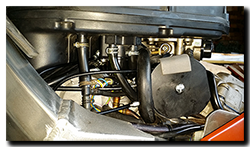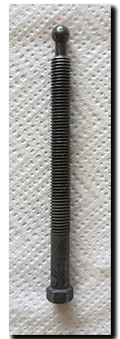 Last year the tester at the MOT station didn’t like the slightly low headlight beams (set to offset loaded panniers) and wanted to raise them. Unfortunately I think he raised the left-hand to the point of possibly unseating the ball at the end of the adjuster screw from the reflector. Friction alone on the other pivots probably only holding it in place to his satisfaction. About a month ago the same headlight went out of vertical alignment a little, then finally the other evening, suddenly dropped completely (and very noticeably!) so the low-beam was now tripping over the front wheel!
Last year the tester at the MOT station didn’t like the slightly low headlight beams (set to offset loaded panniers) and wanted to raise them. Unfortunately I think he raised the left-hand to the point of possibly unseating the ball at the end of the adjuster screw from the reflector. Friction alone on the other pivots probably only holding it in place to his satisfaction. About a month ago the same headlight went out of vertical alignment a little, then finally the other evening, suddenly dropped completely (and very noticeably!) so the low-beam was now tripping over the front wheel!
First check – bulbs out and try to move the reflectors up and down. Right-hand no movement – fine, left-hand very wobbly, plus the adjuster unscrewed completely by hand. So, headlight out as it’s far easier to work on.
Remove the rubber gaiter and bulb and a visual check of the reflector mountings is possible – they looked OK, so I cleaned up the adjuster and applied the lightest wipe 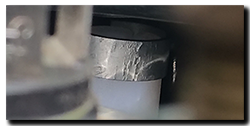 possible of grease on the ball to help it seat more easily, I honestly couldn’t have applied less if I’d just shown it a photo of a grease tub! Then screw in the adjuster and kept going (very gently!) a half turn at a time once it had seated against the reflector socket. I also used a little brass-tool to help pull lightly) on the reflector mount to help the process. I guess I went about three full turns before the ball made a loud ‘pop’ and dropped into position. I don’t know which was more relieved – the stresses in the reflector or my pulse-rate!
possible of grease on the ball to help it seat more easily, I honestly couldn’t have applied less if I’d just shown it a photo of a grease tub! Then screw in the adjuster and kept going (very gently!) a half turn at a time once it had seated against the reflector socket. I also used a little brass-tool to help pull lightly) on the reflector mount to help the process. I guess I went about three full turns before the ball made a loud ‘pop’ and dropped into position. I don’t know which was more relieved – the stresses in the reflector or my pulse-rate!
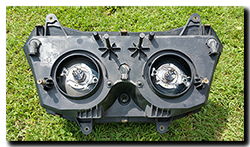 Once the day was at an end, it was time to set the beam height …. the manual quotes 90% of the bulb height from the ground at 10m distance while sat on the bike. I did them one lamp lit at a time, then double checked with both lit and also checked the horizontal alignment at the same time. Total time about 10 minutes and hopefully a happy MOT guy in a few weeks time!
Once the day was at an end, it was time to set the beam height …. the manual quotes 90% of the bulb height from the ground at 10m distance while sat on the bike. I did them one lamp lit at a time, then double checked with both lit and also checked the horizontal alignment at the same time. Total time about 10 minutes and hopefully a happy MOT guy in a few weeks time!
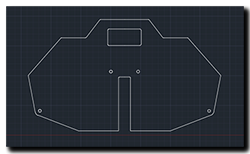 Buttoning it all up went OK, but it was obvious the rubber dashboard lower/headlight shield has finally seen the best of its days with numerous splits starting. So a template was drawn, then reproduced in CAD and some 2mm rubber sheet ordered from Flea-Bay – cheaper than Aprilia, who want over €60 for the same part (AP8168916)!
Buttoning it all up went OK, but it was obvious the rubber dashboard lower/headlight shield has finally seen the best of its days with numerous splits starting. So a template was drawn, then reproduced in CAD and some 2mm rubber sheet ordered from Flea-Bay – cheaper than Aprilia, who want over €60 for the same part (AP8168916)!
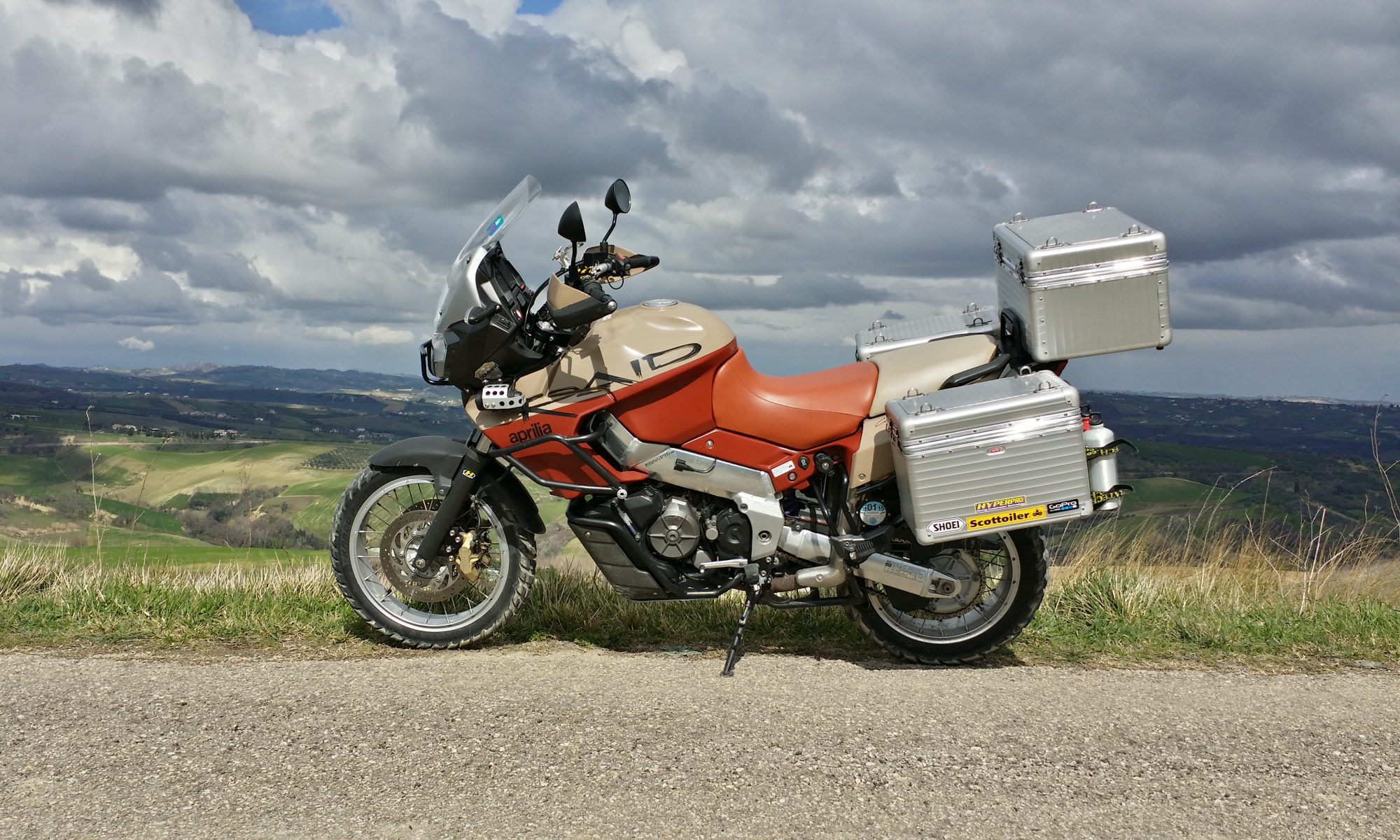
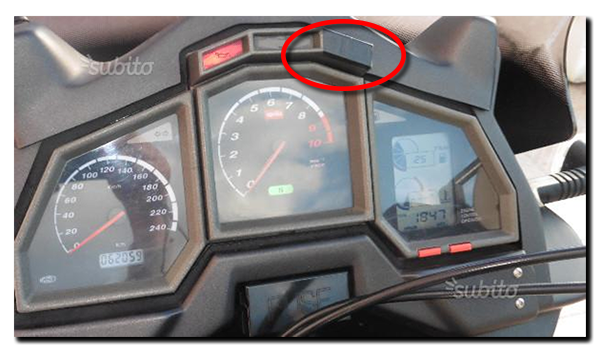




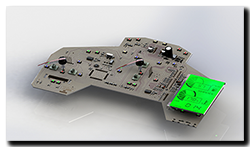
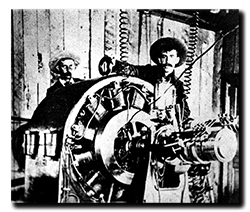
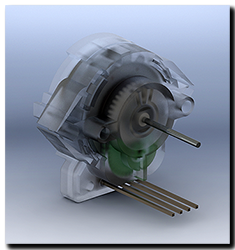
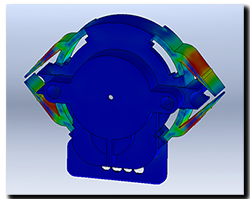
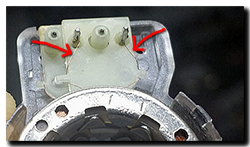
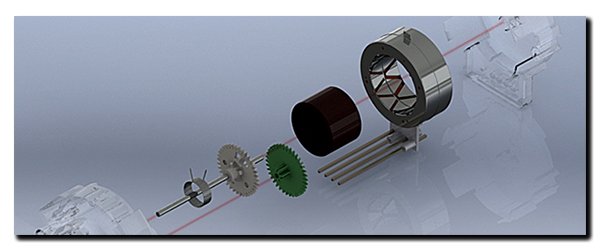
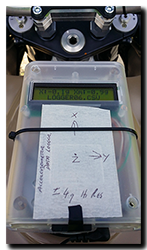
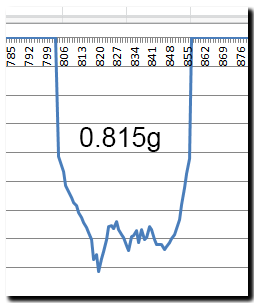 So how to replicate this on the Capo? Enter one test-box to get things started …… a microcontroller that measures acceleration in three axis and has inputs/outputs to the brake light, hazard lights and speedometer. The box of tricks is designed to allow normal brake/hazard light function in case of power or hardware failure … all in the name of safety don’t ya know.
So how to replicate this on the Capo? Enter one test-box to get things started …… a microcontroller that measures acceleration in three axis and has inputs/outputs to the brake light, hazard lights and speedometer. The box of tricks is designed to allow normal brake/hazard light function in case of power or hardware failure … all in the name of safety don’t ya know.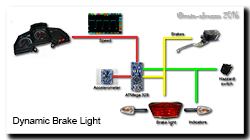
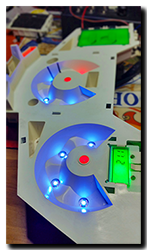 Sometimes a particular feature of a piece of technology can drive you nuts – that itch you can’t scratch! Here’s my particular niggle with the Capo dashboard ……
Sometimes a particular feature of a piece of technology can drive you nuts – that itch you can’t scratch! Here’s my particular niggle with the Capo dashboard ……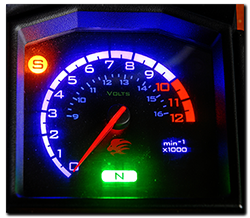 Way back when I started playing with the idea of using the dashboard tachometer as a voltmeter, I was aware I had one stumbling block …. I didn’t have a decent workbench power supply to calibrate the software/voltmeter against. In the end just using a battery and resistors the ball-park calibration wasn’t too bad, reading within a needles width of the correct voltage from 13 – 14v but it drifted terribly above and below this range.
Way back when I started playing with the idea of using the dashboard tachometer as a voltmeter, I was aware I had one stumbling block …. I didn’t have a decent workbench power supply to calibrate the software/voltmeter against. In the end just using a battery and resistors the ball-park calibration wasn’t too bad, reading within a needles width of the correct voltage from 13 – 14v but it drifted terribly above and below this range.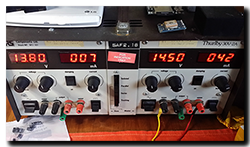
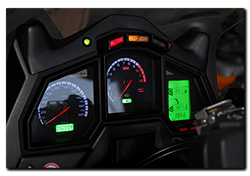 With just over 82,000 miles on the Caponord, the dashboard died. Yes, while about to set off from a rather innocuous little shop car park on a hot and humid afternoon, the dashboard shuffled off its mortal coil … Curled up its toes, bought the farm – as dead as the proverbial Dodo.
With just over 82,000 miles on the Caponord, the dashboard died. Yes, while about to set off from a rather innocuous little shop car park on a hot and humid afternoon, the dashboard shuffled off its mortal coil … Curled up its toes, bought the farm – as dead as the proverbial Dodo.
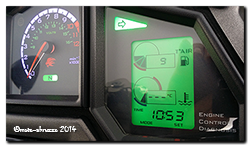
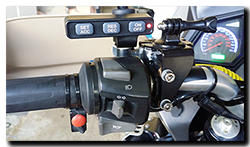 The second anniversary, although shorter at 6 months and a tad over 11K miles, is the
The second anniversary, although shorter at 6 months and a tad over 11K miles, is the 